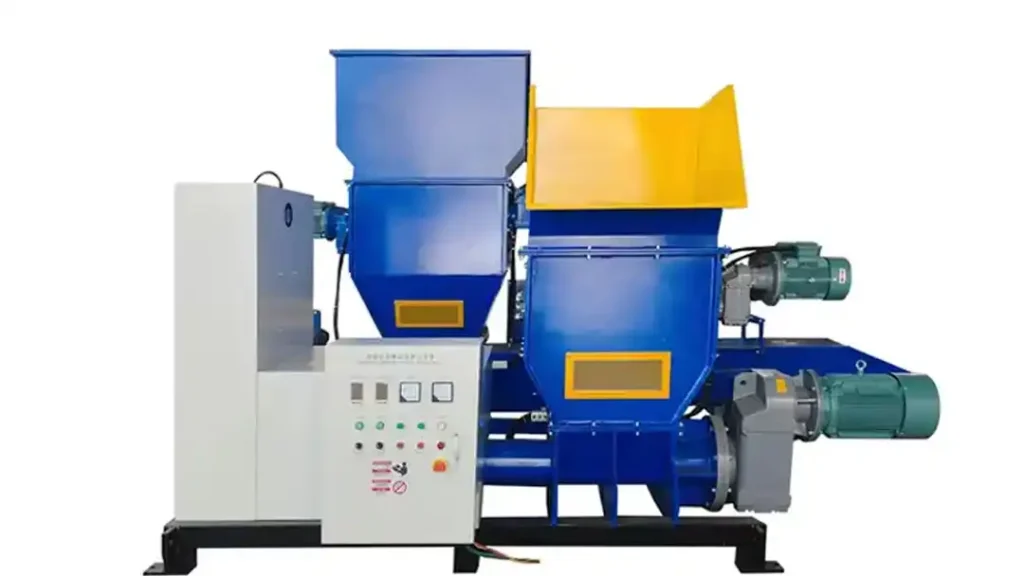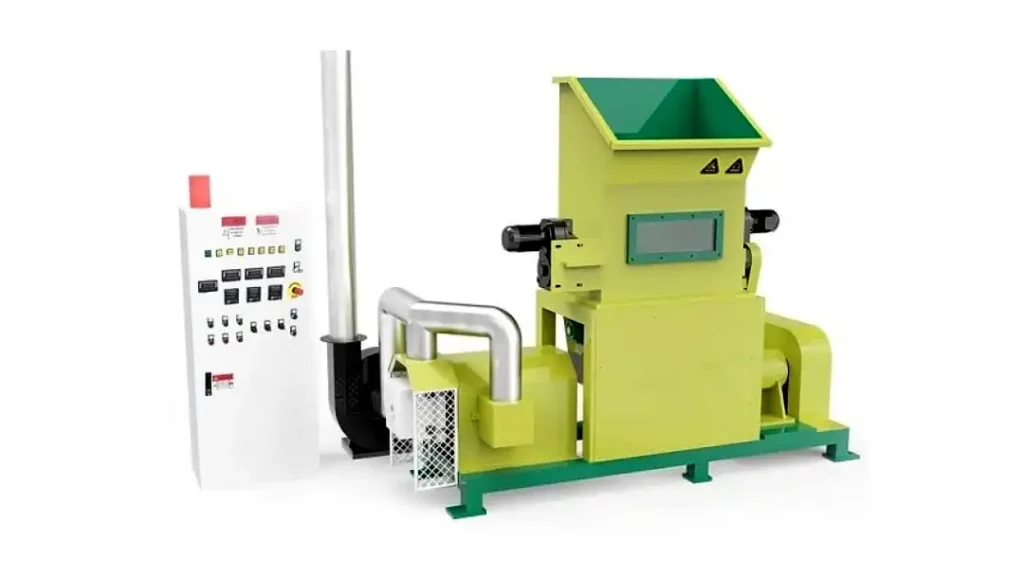Calibrating a foam densifier is a crucial step in ensuring its accurate and efficient operation. By adjusting various settings and sensors, calibration allows for optimal compression of foam waste.
In this article, we will delve into the process of calibrating a foam densifier, discussing its importance and providing detailed instructions. Whether you are a beginner or experienced in foam densifier operation, this guide will help you achieve reliable results.
What Is A Foam Densifier

Foam densifiers are machines designed to compress foam waste into manageable blocks or logs. These devices effectively reduce the volume of foam, making transportation and disposal more convenient. Various models of foam densifiers are available in the market, each with its own unique features and capabilities.
When operating a foam densifier, understanding its purpose is essential. The machine utilizes hydraulic pressure to compress foam, thereby decreasing its size significantly. By compacting foam waste, foam densifiers facilitate recycling efforts and contribute to environmental sustainability.
Why Calibrate a Foam Densifier

The calibration of a foam densifier holds immense importance in its overall performance. Proper calibration ensures that the machine operates accurately and consistently according to the desired settings. Failing to calibrate the densifier can lead to inefficiencies, decreased productivity, and potential malfunctions.
One of the primary benefits of calibration is increased efficiency. When a foam densifier is calibrated correctly, it can compress foam waste precisely within the desired density range. This accuracy minimizes unnecessary compression or insufficient densification, optimizing the use of energy and reducing operational costs.
How Does Foam Densifier Work
Working Principle of Foam Densifiers
Now, let’s explore the working principle behind foam densifiers and how they transform bulky foam waste into compacted blocks.
Compression Process
The core principle behind a foam densifier lies in its ability to apply hydraulic pressure to the foam waste, compressing it into smaller volumes. Here’s a step-by-step breakdown of how it works:
Feeding the Foam Waste:
The foam densifier is equipped with a hopper or feeding mechanism where the foam waste, in its loose form, is introduced. The foam can be in various shapes, including packaging materials, foam trays, or insulation boards.
Breaking Down the Foam:
Once the foam waste enters the densifier, it encounters a cutting mechanism or a shredder that breaks it down into smaller fragments. This fragmentation process increases the surface area, making it easier for the foam to compress further.
Conveying the Foam:
The broken foam pieces are then transported to the compression chamber through a conveyor system. The conveyor ensures a continuous flow of foam waste through the densifier.
Applying Hydraulic Pressure:
Inside the compression chamber, hydraulic pressure is exerted on the foam waste. This pressure can be generated either by a hydraulic piston or hydraulic cylinders, depending on the design of the densifier. The hydraulic system applies force evenly, compacting the foam and reducing its volume.
Heat-Assisted Densification:
Some foam densifiers employ heat to aid in the densification process. They may utilize heat plates, heated screws, or hot air circulation systems. The heat softens the foam, allowing it to compress more effectively under the applied pressure. It promotes better fusion of the foam particles and increases the overall density of the compressed blocks.
Forming Densified Blocks:
As the foam waste undergoes compression and heat application, it transforms into dense blocks or logs. The size and shape of the blocks depend on the specific densifier model and the desired output. Once the blocks are formed, they can be used for recycling or further processing.
How to Calibrate a Foam Densifier
Calibrating a foam densifier involves several key steps to achieve accurate results. Before proceeding with calibration, ensure you have read and understood the manufacturer’s instructions specific to your machine. Let’s walk through the calibration process:
Preparing the foam densifier for calibration:
- Prioritize safety by wearing appropriate personal protective equipment (PPE).
- Follow machine-specific safety guidelines provided by the manufacturer.
Identifying calibration points:
- Locate critical components within the foam densifier that require calibration, such as the hydraulic controls, temperature sensors, and pressure sensors.
Adjusting the hydraulic settings:
- Access the hydraulic controls on the foam densifier and make adjustments as per the manufacturer’s recommendations.
- Typically, the hydraulic settings involve regulating the compression force and speed of the densifier.
Calibrating the temperature and pressure sensors:
- Use calibrated instrumentation to measure and adjust the temperature and pressure sensors on the machine.
- Ensure the sensors provide accurate readings for precise operation.
Testing the densifier after calibration:
- Once the calibration is complete, perform a test run to verify the accuracy and efficiency of the foam densifier.
- Observe the compression process and ensure it aligns with the desired density and compression levels.
Benefits of Foam Densifiers
Understanding how foam densifiers work allows us to appreciate the numerous benefits they offer. Here are some advantages of using foam densifiers:
Reduced Storage Space: By compressing foam waste, densifiers significantly reduce the volume, freeing up valuable storage space.
Cost Savings: Foam densifiers contribute to cost savings by minimizing transportation expenses. With densified foam taking up less space, fewer trips and smaller vehicles are required for transportation.
Environmentally Friendly: Foam densifiers support recycling initiatives by reducing the bulk of foam waste, making it easier to recycle and divert it from landfills. This promotes sustainability and reduces environmental impact.
Efficient Waste Management: With foam densifiers, managing foam waste becomes more practical and efficient. The densified blocks can be easily stacked, stored, and transported for recycling or proper disposal.
Resource Conservation: By compacting foam waste, densifiers optimize the use of resources. Less space is needed for storage, fewer vehicles are required for transportation, and less energy is consumed during the recycling process.
Troubleshooting Calibration Issues
While calibration typically results in accurate operation, occasional issues may arise. Understanding common calibration problems and their solutions will help you address any unexpected challenges. Here are some commonly encountered calibration issues and their troubleshooting steps:
Common calibration problems:
- Inconsistent compression force
- Unstable temperatures or pressure readings
- Densifier operating outside the desired density range
Solutions for calibration errors:
- Verify hydraulic connections and system integrity
- Check and calibrate temperature and pressure sensors
- Adjust hydraulic settings within the recommended range
- Consult the manufacturer’s troubleshooting guide if issues persist
Maintenance and Regular Calibration
To maintain consistent and accurate performance, regular maintenance and calibration of a foam densifier is essential. Proper maintenance ensures the longevity of the machine and minimizes unexpected breakdowns. Depending on the frequency of use and environmental factors, it is advisable to calibrate the densifier periodically. The following factors influence the calibration intervals:
- Frequency of usage
- Operating environment (humidity, temperature, etc.)
- Foam waste properties
Conclusion
Calibrating a foam densifier is a critical step to optimize its performance and efficiency. By following the calibration process outlined in this guide, you can ensure accurate compression of foam waste, leading to reduced costs and improved recycling efforts. Regular calibration and proper maintenance will help prolong the lifespan of your foam densifier and contribute to a greener environment.
FAQs
What is the purpose of foam densifiersa?
Foam densifiers compress foam waste to reduce volume, making transportation and disposal more convenient while promoting recycling.
How do foam densifiers compress foam waste?
Foam densifiers utilize hydraulic pressure to compact foam waste into smaller and denser blocks or logs.
What are the benefits of proper calibration?
Proper calibration ensures accurate compression within desired density ranges, increasing efficiency, reducing costs, and optimizing energy usage.
How often should a foam densifier be calibrated?
The frequency of calibration depends on factors such as usage frequency, operating environment, and foam waste properties. It is recommended to calibrate periodically.
What are the common calibration problems and their solutions?
Common calibration problems include inconsistent compression force, unstable temperature or pressure readings, and operating outside the desired density range. Troubleshooting steps involve verifying connections, calibrating sensors, and adjusting hydraulic settings within the recommended range.
